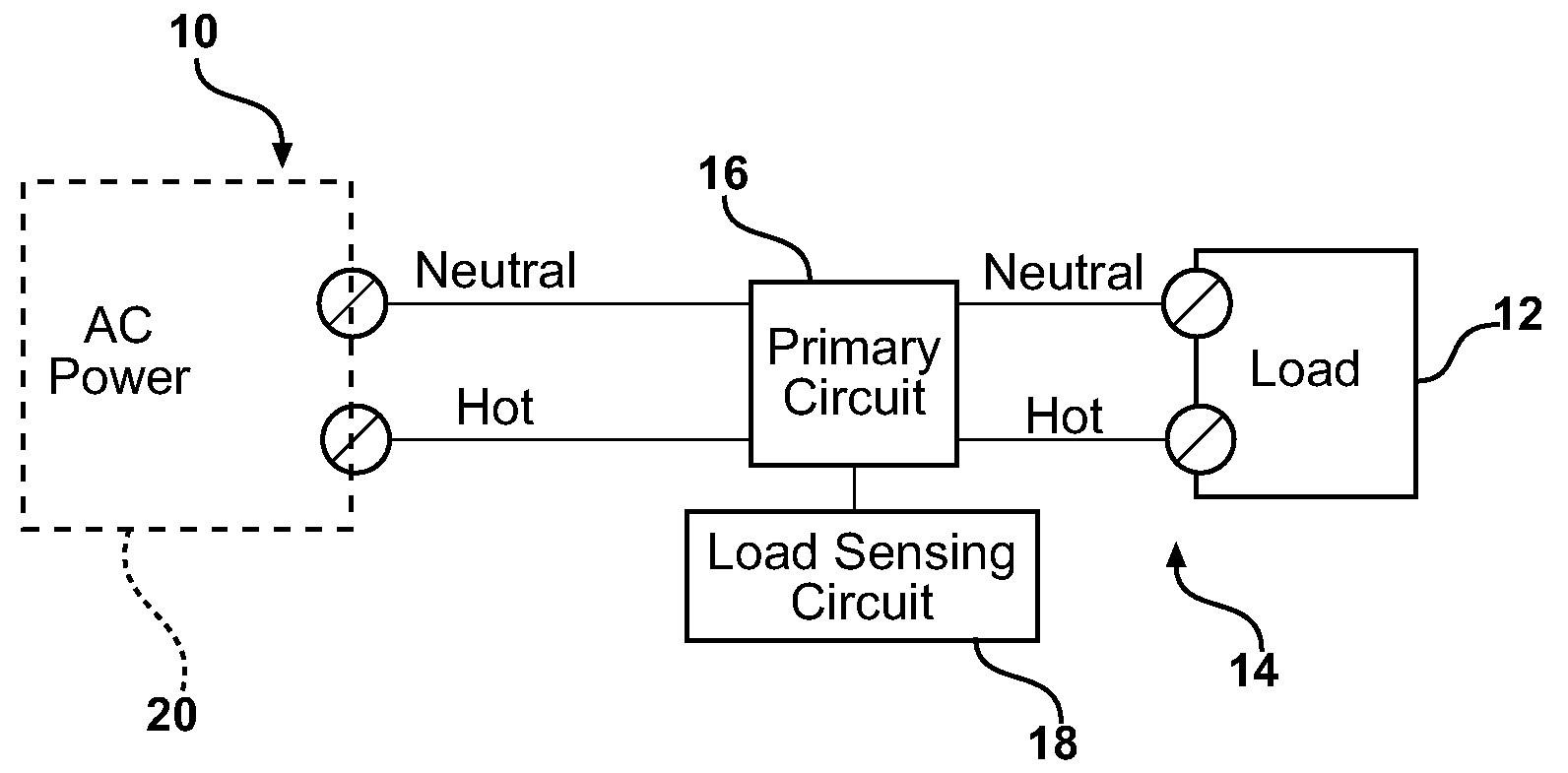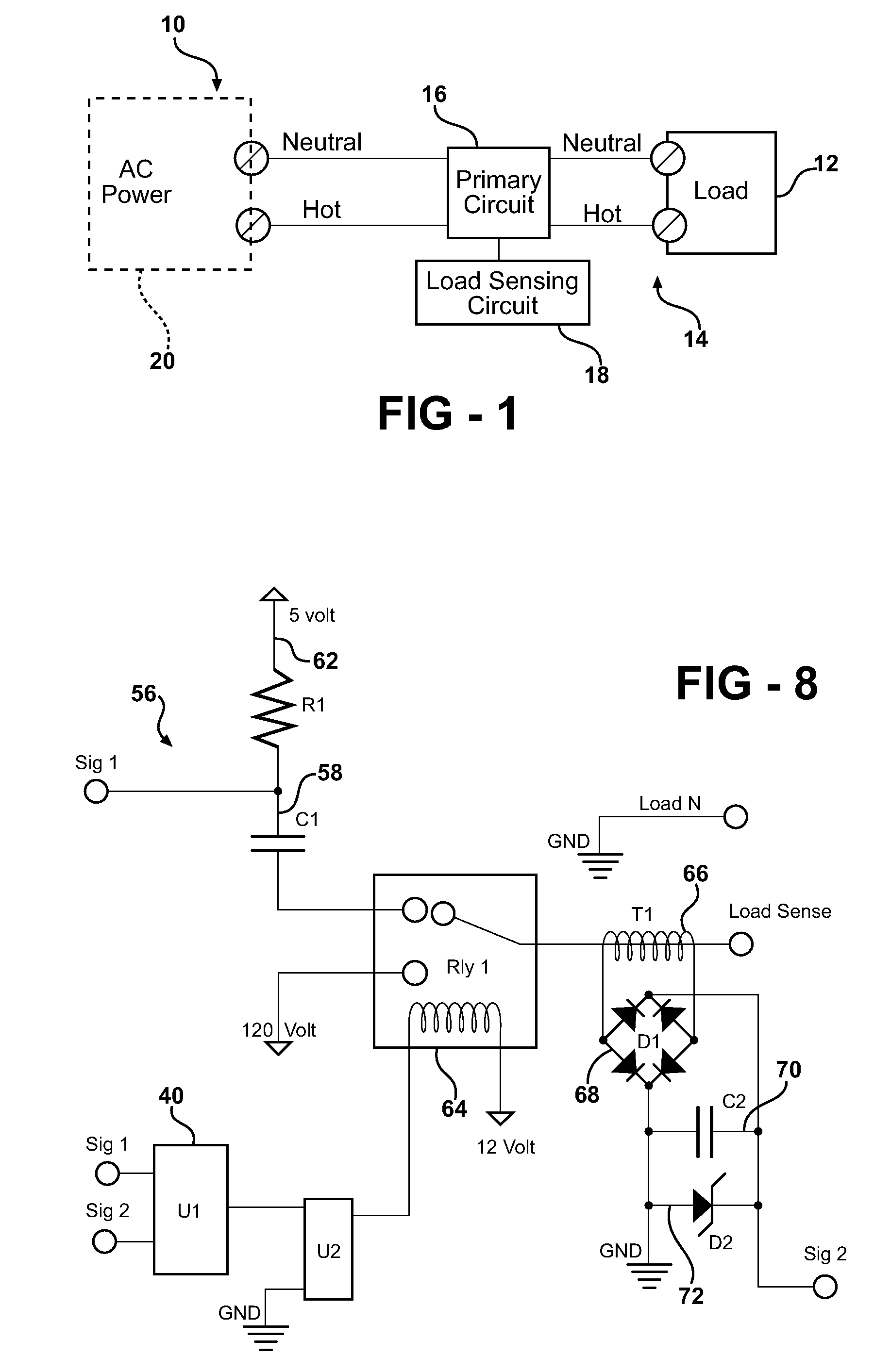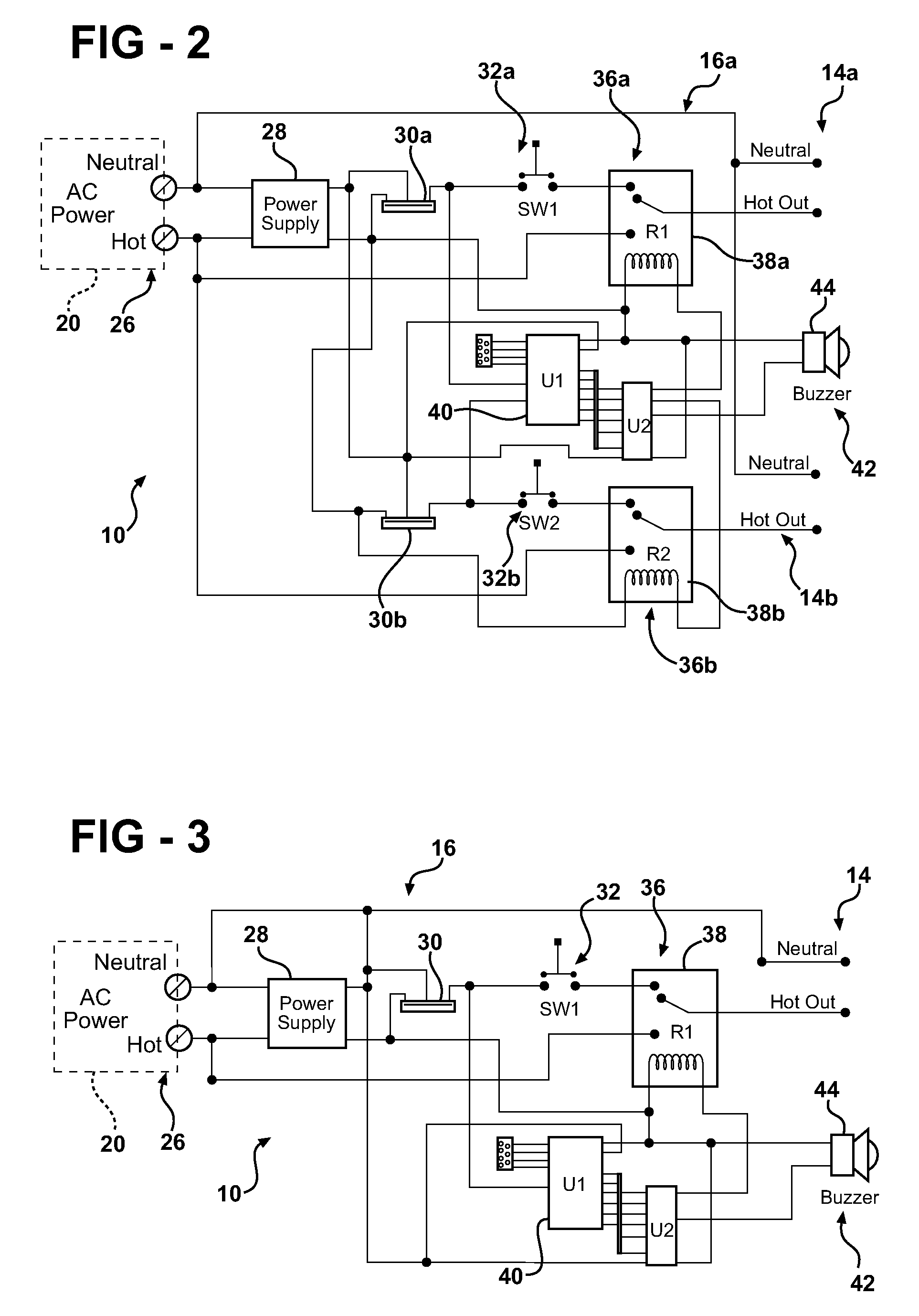Current Sensing Load Demand Apparatus and Methods
a current sensing and load technology, applied in the field of electric receptacles, can solve the problems of no special protection, no protection, and no protection at all for afci's, and achieve the effect of preventing all possible circuit faults, ensuring safety, and ensuring safety
- Summary
- Abstract
- Description
- Claims
- Application Information
AI Technical Summary
Benefits of technology
Problems solved by technology
Method used
Image
Examples
Embodiment Construction
[0028]With reference to the drawings and in operation, the present invention provides an apparatus 10 for supplying AC Power to a load 12.
[0029]With particular reference to FIG. 1, the apparatus 10 includes a pair of output terminals 14, a primary circuit 16, and a load sensing circuit 18. The primary circuit 16 is electrically coupled to a source of AC power 20 and to the output terminals 14. The primary circuit 16 selectively provides power at a low voltage at the output terminals 14 or electronically couples the source of AC power 20 directly to the output terminals 14. In one aspect of the present invention, the primary circuit 16 provides power at the low voltage at the application of the load 12.
[0030]The load sensing circuit 18 is coupled to the primary circuit 16 and the source of AC power 10. The load sensing circuit 18 determines a resistance associated with the load12 at initial application of the load 12 and controls the primary circuit 16 to electronically couple the so...
PUM
 Login to View More
Login to View More Abstract
Description
Claims
Application Information
 Login to View More
Login to View More - R&D
- Intellectual Property
- Life Sciences
- Materials
- Tech Scout
- Unparalleled Data Quality
- Higher Quality Content
- 60% Fewer Hallucinations
Browse by: Latest US Patents, China's latest patents, Technical Efficacy Thesaurus, Application Domain, Technology Topic, Popular Technical Reports.
© 2025 PatSnap. All rights reserved.Legal|Privacy policy|Modern Slavery Act Transparency Statement|Sitemap|About US| Contact US: help@patsnap.com



